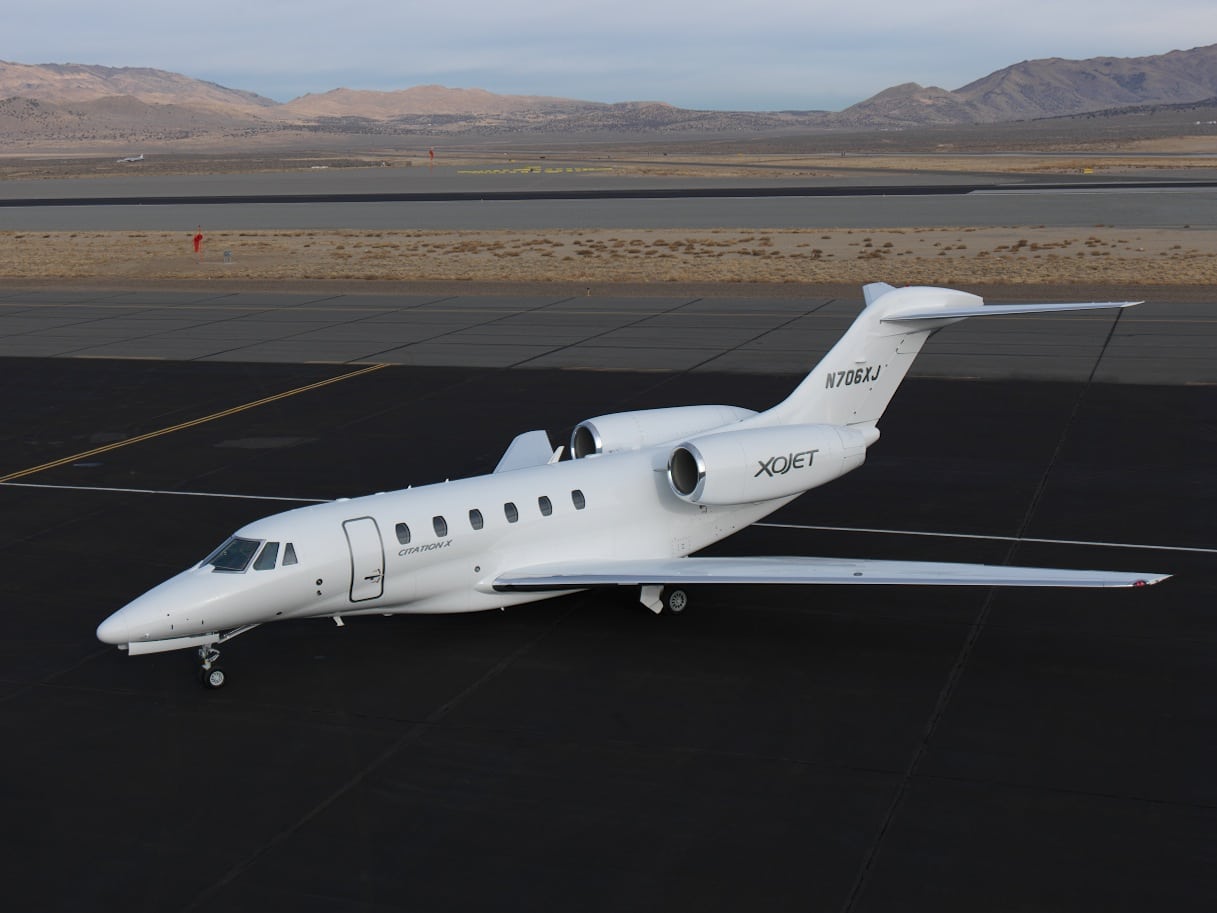
XOJet Cessna Citation X. Photo courtesy of XOJET
Over a seven-month period in 2017, XOJET performed what it says is private aviation’s first Line Operations Safety Assessment (LOSA), in an effort to increase the standardization of its flight training, regulatory compliance and risk management procedures.
According to the FAA, commercial airline flight crews have been using LOSA since 2001 to proactively reduce undesirable flight events, assess threats and correct common errors that can occur while flying. The agency lists 10 essential characteristics of a LOSA program, including peer-to-peer observations, non-punitive data collection and voluntary reporting of unsafe conditions.
XOJET’s new director of safety, Daniel Ramirez, a former safety manager at Embraer with experience in advisory positions to the FAA’s GA-Joint Steering Committee and ICAO’s regional aviation safety group, told Avionics LOSA is a standard procedure for commercial aviation. But XOJET is private aviation’s first major operator to embrace it.
“This is not common practice in private aviation. We’re pioneering it,” Ramirez told Avionics. “One of the biggest obstacles to perform LOSA in a typical private jet is the need to have a trained LOSA pilot on board. This is difficult since most private jets don’t have jump seats.”
LOSA auditors are required to receive specialized training on human and pilot performance errors to identify negative trends and procedures. Last year, XOJET expanded its flight standards department to 30 flight standards captains and eight FAA-designated check pilots in tandem with the launch of its LOSA program to create a “quality assurance feedback loop,” Ramirez said.
A total of 132 flights served as line observations for XOJET pilots, the results of which will lead to increased standardization of flight procedures.
“The program also identified the need to further standardize all of our cockpit procedures so that any pilot can walk into an XOJET cockpit and understand what our standard methodology and flight procedures are in all phases of flight,” said Ramirez.
FOQA and Cybersecurity
Along with LOSA, Ramirez said XOJET is also focused on its flight operational quality assurance (FOQA) program as well as addressing cybersecurity risks associated with internet connectivity featured across its fleet of Challenger 300s and Citation Xs.
The aircraft are equipped with quick access recorders (QARs) connected to the flight data recorders (FDR), which Ramirez said will help establish its FOQA program.
“Our FOQA program will allow us to improve the current safety level found in our industry. To accomplish this, we’re willing to share our analysis with other 135 operators. We are willing to do this because from our perspective, safety is not a competition,” said Ramirez.
All of XOJET’s fleet is equipped with in-flight connectivity, an area the company previously discussed extensively with Avionics.
Dave Colbert, SVP of flight operations for XOJET, said one of its goals is to use connectivity to improve its ability to acquire aircraft data in real time. The goal of this data collection effort is to provide its maintenance control team with insights that will help return aircraft to service faster when problems are detected.
However, that capability is not currently possible, he said.
“Right now the primary use for connectivity outside of the cabin is to upload navigation data bases to ease the pilot’s workload, but there’s a lot more that they can do,” he added. “At this point they’re so immature, that they’re really a curiosity and don’t have the security necessary to consider them for in-flight use.”
Similar to its efforts with the LOSA program, XOJET is taking a proactive risk assessment and management approach to the cyber risks associated with onboard connectivity. In-flight entertainment and connectivity providers such as Gogo, Thales and Panasonic Avionics are also taking a proactive approach to cyber threats.
Ramirez said that for now, XOJET’s use of connectivity would remain focused on providing internet access for passengers before more advanced pilot and maintenance crew usage is considered.
“The Challenger 300 is very advanced. It can send and receive data from many systems on board, and with our current capabilities, we could receive this data not just for safety analysis but maintenance as well,” said Ramirez. “However, we have not seen a real firewall to protect those systems from intrusion, so we currently placed that capability on hold until our risk assessment allows us to have adequate mitigation levels according to our [safety management system] process.”